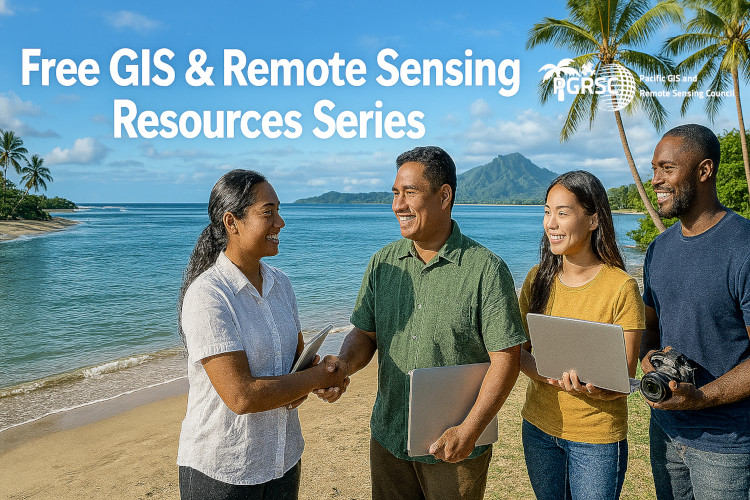On behalf of the Pacific GIS and Remote Sensing Council (PGRSC), we welcome you to Week 7 of our series to promote free GIS and remote sensing resources (webinars, instructional videos, technical manuals, e-books, etc.) to increase capacity, awareness, and skill development for the Pacific Islands geospatial community. Last week, we introduced the GeoAI: Artificial Intelligence for Geospatial Data project – a Python library for image classification and segmentation.. This week we will explore online web mapping applications that provide visualisation of historic, real-time, and forecasted ocean conditions and data through the Pacific Islands Ocean Observing System (PacIOOS) Voyager website.
Week 7: Are you interested in accessing historical, real-time, and forecasted ocean observation and satellite-derived data? The Pacific Islands Ocean Observing System (PacIOOS) empowers ocean users and stakeholders in the Pacific Islands by providing accurate and reliable coastal and ocean information, tools, and services that are easy to access and use. PacIOOS collects real-time data on ocean conditions, forecasts future events, and develops user-friendly tools to access this information – such as the PacIOOS Voyager website. The PacIOOS region spans across the U.S. Pacific Islands, including the State of Hawaiʻi (Kauaʻi, Oʻahu, Maui County, Hawaiʻi Island); the territories of Guam, the Commonwealth of the Northern Mariana Islands (CNMI), and American Samoa; the Freely Associated States of the Federated States of Micronesia (FSM), the Republic of the Marshall Islands (RMI), and the Republic of Palau; and the Minor Outlying Islands of Howland, Baker, Johnston, Jarvis, Kingman, Palmyra, Midway, and Wake.
PacIOOS resources:
https://www.pacioos.hawaii.edu/voyager
We hope that these materials are beneficial to you. Please let us know if you have a free GIS or remote sensing resource that you would like to promote as well so others can learn from them.

